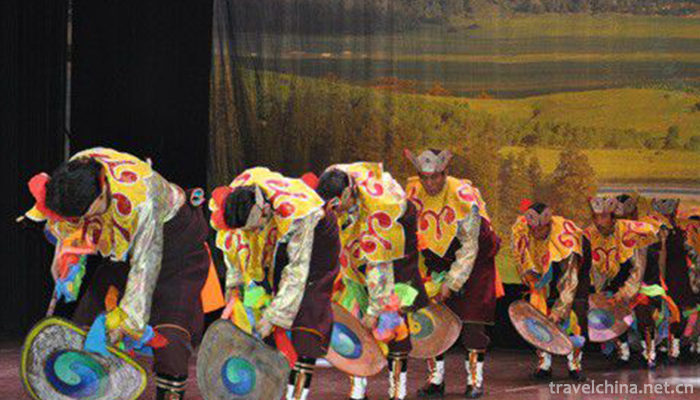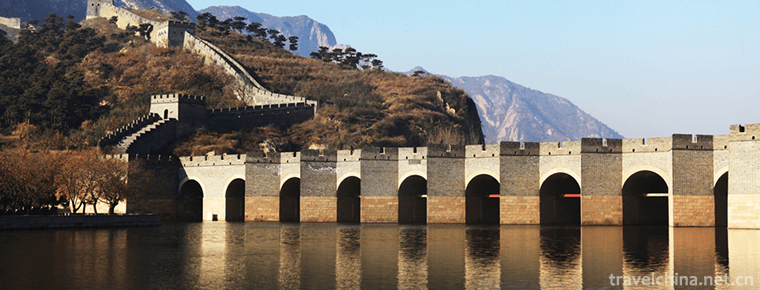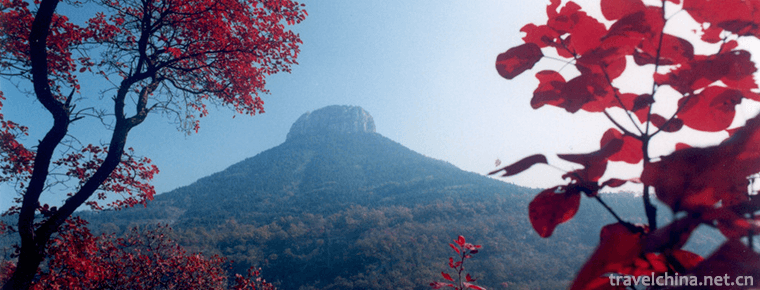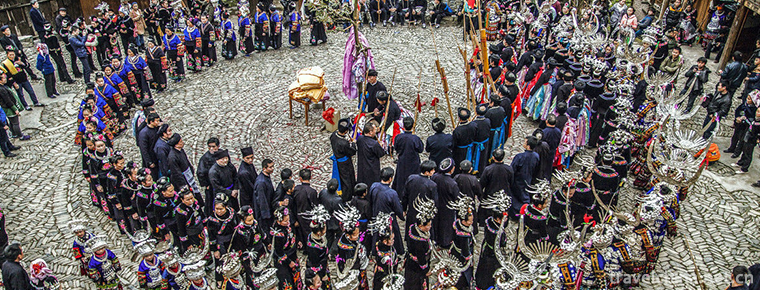2018-12-22

- By ChinaWiki.net
- Chinese Edition
- 2019-04-05
Tibetan Gugu Encouragement
Tibetan God inspiration has a long history. As for its origin, there is a legend that one or two hundred years ago, a "Gawa Hubo" (i.e. a local official) in Ningba village danced in the mansion north of the village on the second day of the first lunar month every year. Later, Yongzengcang Living Buddha (about 1881 - 1958) consolidated and standardized this dance at the age of forty and fifty, and this tradition has been followed ever since. Spreaded in Xunhua area of Qinghai Province, it is a Tibetan primitive religious sacrificial dance with a relatively fixed performance form and style. Historically, because it is far away from the political center of Tibet, this area has also been influenced by the Tubo culture, Tuguhun culture, Xixia Jiao culture, Mongolian culture and Han culture.
In June 2008, the Tibetan Drum Encouragement declared by Xunhua Sala Autonomous County of Qinghai Province was listed in the second batch of national intangible cultural heritage list with the approval of the State Council.
Heritage serial number: 689 III-92.
historical origin
"Tibetan Gugu Dance" is a primitive Tibetan religious sacrificial dance, which spreads in Xunhua area of Qinghai Province. It has a relatively fixed performance form and style. Historically, because of its distance from the political center of Tibet and its inconvenience in transportation, Tibetan traditional culture has been preserved in many aspects, such as religion, language, customs and folk arts. Historically, this area has also been influenced by Tubo culture, Tuguhun culture, Xixia culture, Mongolian culture and Han culture.
artistic characteristics
Tibetan Gugu Encouragement. Gugu Encouragement: Tibetan Gugu Encouragement is spread in Xunhua area of Qinghai Province. In the form of collective dance, Tibetan Gugu Encouragement reflects the religious beliefs, labor and life interests and aesthetic concepts of the local Tibetans.
Inheritance significance
In the southeastern part of Qinghai Province, under the Dalika Snow Mountain and the Dongri Yanshan Mountains, and above the Luomen Mountains in the Gala Mountains, the area known in Tibetan history as the Eight Sacred Wheels shrouded all over the fields, and the land like eight lotus petals reflected each other, is now under the jurisdiction of Daoshan Tibetan Township in Xunhua Salar Autonomous County. Ningba village is located here. It is the main birthplace of the second batch of national intangible cultural heritage projects. The ancient land has the essence of sunshine and rain, and has the spirit of all things in the mountains and rivers. Since ancient times, it has been a sacred place for heroes to gallop and the generation of sages.
Tibetan drum dance is a kind of folk sacrificial dance that amuses people and pleases gods. It has a strong Tibetan religious and cultural color. The dance scene is magnificent, momentum is huge, the number of actors is small, then more than a dozen people, more than a hundred people, rough, free and easy movements, rhythm is strong, flexible and changeable dance picture scheduling, drum point when strong and weak, slow and fast, like a storm, slow like lotus floating water, has a strong artistic appeal and strong artistic vitality, giving people a refreshing artistic enjoyment. In the form of collective dancing art, it fully expresses the ideological content of inviting God, revering God, sending God and demon, and fully reflects the religious beliefs of local nationalities, the interest of working life and the aesthetic concept of culture and art. It also fully reflects the characteristics of dance culture on the Qinghai-Tibet Plateau and the relics of primitive religious culture.

Ask a Question
Your email address will not be published.



0 Questions